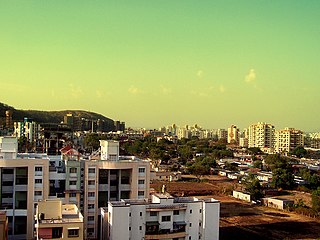Related Research Articles

RDX (abbreviation of "Research Department eXplosive") or hexogen, among other names, is an organic compound with the formula (O2N2CH2)3. It is a white solid without smell or taste, widely used as an explosive. Chemically, it is classified as a nitroamine alongside HMX, which is a more energetic explosive than TNT. It was used widely in World War II and remains common in military applications.

An explosive is a reactive substance that contains a great amount of potential energy that can produce an explosion if released suddenly, usually accompanied by the production of light, heat, sound, and pressure. An explosive charge is a measured quantity of explosive material, which may either be composed solely of one ingredient or be a mixture containing at least two substances.

A solid-propellant rocket or solid rocket is a rocket with a rocket engine that uses solid propellants (fuel/oxidizer). The earliest rockets were solid-fuel rockets powered by gunpowder; they were used in warfare by the Arabs, Chinese, Persians, Mongols, and Indians as early as the 13th century.

HMX, also called octogen, is a powerful and relatively insensitive nitroamine high explosive, chemically related to RDX. Like RDX, the compound's name is the subject of much speculation, having been variously listed as High Melting Explosive, Her Majesty's Explosive, High-velocity Military Explosive, or High-Molecular-weight RDX.

George Bogdanovich Kistiakowsky, was a Ukrainian-American physical chemistry professor at Harvard who participated in the Manhattan Project and later served as President Dwight D. Eisenhower's Science Advisor.

FOX-7 or 1,1-diamino-2,2-dinitroethylene(DADNE) is an insensitive high explosive compound. It was first synthesized in 1998 by the Swedish National Defence Research Institute (FOS). The name FOX-7 is derived from the acronym of the Swedish Defence Research Agency (FOI), with the I replaced by an X to indicate an explosive, as in RDX and HMX.

Hexanitrohexaazaisowurtzitane, also called HNIW and CL-20, is a polycyclic nitroamine explosive with the formula C6H6N12O12. In the 1980s, CL-20 was developed by the China Lake facility, primarily to be used in propellants. It has a better oxidizer-to-fuel ratio than conventional HMX or RDX. It releases 20% more energy than traditional HMX-based propellants, and is widely superior to conventional high-energy propellants and explosives.

Pashan is suburb of Pune, India. It is located off the Mumbai-Bangalore national highway, by-passing Pune city. Pashan road serves as the main approach road for Mumbai-Pune expressway. Pashan is bordered by Baner in north, Sus on west, Bavdhan in south and Pune University in east. Pashan is mostly a residential suburb of Pune and large portions are occupied by various governmental and educational institutions. In October 2019, Pashan received more rainfall than the wettest place on Earth.
The Centre for Fire, Explosive and Environment Safety (CFEES) is an Indian defence laboratory of the Defence Research and Development Organisation (DRDO). Located in Timarpur, Delhi, its main function is the development of technologies and products in the area of explosive, fire and environmental safety. CFEES is organised under the Armaments Directorate of DRDO. The present director of CFEES is Rajiv Narang
Laser Science and Technology Centre (LASTEC) is a laboratory of the Defence Research & Development Organization (DRDO). Located in Delhi, it is the main DRDO lab involved in the development of Lasers and related technologies. LASTEC functions under the DRDO Directorate of Electronics & Computer Science.
Terminal Ballistics Research Laboratory (TBRL) is a laboratory of the Defence Research and Development Organisation (DRDO) which comes under Ministry of Defence. Located in Chandigarh, the laboratory has become one of the major DRDO labs in the field of armament studies. TBRL is organized under the Armaments Directorate of DRDO. The present director of TBRL is Shri. Prateek Kishore.
Defence Research & Development Establishment (DRDE) is an Indian defence laboratory of the Defence Research and Development Organisation (DRDO). Located in Gwalior, it is primarily involved in the research and development of detection and protection against toxic chemical and biological agents. DRDE is organised under the Life Sciences Directorate of DRDO. The present director of DRDE is Dr. Manmohan Parida.
Dr. V. N. Krishnamurthy is the former Dy. Director of VSSC and Honorable Director of ISRO-UoP Interaction cell. He obtained his M.Sc. from Madras University and Ph.D. from Indian Institute of Science, Bangalore in 1967. He joined Vikram Sarabhai Space Centre, in February 1968 as chief of analytical facility. He became head of the Propellant Engineering Division in 1976, Group Director Propellants Group in 1986, and Deputy Director in 1989 before retiring in February 1997. After retiring, he became the Honorary Director of DRDO-ISRO-UoP Cells, which coordinates the activities undertaken for ISRO and DRDO at University of Pune. His tenure was over in August 2004 and after that he worked as an editor for two different encyclopaedias. Now he spends his time writing books and doing special guest lectures at universities and colleges in India.
Haridwar Singh was an Indian scientist. He has been director of the High Energy Materials Research Laboratory (HEMRL), Defence Research and Development Organisation (DRDO), Ministry of Defence, from 1990 to 2004.

The Dalian Institute of Chemical Physics (DICP), also called Huawusuo (化物所), is a research centre specialized in physical chemistry, chemical physics, biophysical chemistry, chemical engineering and materials science belonging to the Chinese Academy of Sciences. It is located in Dalian, Liaoning, China.
Defence Research & Development Service (DRDS) is a Central Group 'A' Civil Service of the Government of India. DRDS scientists are Gazetted defence-civilian officers under the Ministry of Defence. They are responsible for developing new technologies and military hardware for the Indian defence and security forces.

Solid Fuel Ducted Ramjet (SFDR) is a missile propulsion system currently being developed by the Defence Research and Development Organisation of India. The project aims to develop critical technologies required in the propulsion systems of future Indian long range air-to-air missiles.
The High Speed Low Drag (HSLD) bomb is a family of new generation short range air-dropped precision-guided munition that is currently being developed by India's Defence Research and Development Organisation (DRDO). This general-purpose bomb is made for the Indian Air Force (IAF) and can be used against the destruction of strategic high value enemy infrastructure from stand-off distances. HSLD is comparable to Mark 80 series of bombs used by United States Air Force (USAF).

SMART is a canister-based, long-range anti-submarine missile developed by the Defence Research and Development Organisation (DRDO) for the Indian Navy.
This article consists of projects of the Defence Research and Development Organisation.
References
- 1 2 V.K. Abdullah (15 January 2004). "Strengthen Network of R&D Labs: Dr Aatre". Sainik Samachar. Retrieved 14 November 2007.
- ↑ History of HEMRL Archived 14 November 2007 at the Wayback Machine
- ↑ HEMRL Areas of work Archived 30 November 2007 at the Wayback Machine
- ↑ HEMRL Facilities Archived 14 November 2007 at the Wayback Machine
- ↑ HEMRL Products and Technologies available for the civilian sector Archived 14 November 2007 at the Wayback Machine
- ↑ "DRDO Laboratory Develops Powerful, Light, Compact CL-20 Explosive | India Defence". Aeroindia.org. Archived from the original on 4 March 2016. Retrieved 28 January 2012.
- ↑ "Explosion in DRDO Laboratory, Pune". Sainik Samachar. 1 July 2002. Retrieved 14 November 2007.
Six personnel were killed in the incident including two technical officers of HEMRL and four workers of contractor. The DRDO has paid Rs 50,000 each from the benevolent fund to the deceased contract workers of the company and Rs 1 lakh to each of the HEMRL employees.
- ↑ "Accidental fire in HEMRL, Pune. Court of inquiry constituted". Government of India Press Information Bureau. 26 April 2002. Retrieved 14 November 2007.
- ↑ "Six die in DRDO lab fire in Pune". The Times of India . 26 April 2002. Archived from the original on 18 October 2012. Retrieved 14 November 2007.
- ↑ Kulkarni, Prasad (2 October 2009). "Explosive processing stopped at HEMRL for a week". The Times of India. Retrieved 28 July 2018.